Not long ago, two charts changed our product roadmap.
The first showed our organic traffic curve. Rankings looked strong. Yet clicks were slipping.
The second came from our BI report. More new customers were entering Surfer through “ChatGPT,” “Gemini,” and “Perplexity.” Same budget. Same GTM. New discovery path.
That’s when it clicked: search is becoming answers, and AI assistants are the middlemen deciding which answers show up.
This isn’t doom and gloom. It’s a reset. And it rewards the teams who act first.
Why clicks feel softer
Google’s AI Overviews (AIO) put summaries at the top of search results. BrightEdge found that since AIO launched, search impressions grew ~49%, but click-through rates dropped ~30%.
In plain English: more pages “appear” in searches, but fewer people leave Google. Why?
Because Google counts you as an impression even if you’re just one of twenty sources behind the answer.
Pew Research found the same pattern: when an AI summary appears, people click less. And when they do, they almost never choose one of the cited sources, only 1% of visits in Pew’s sample did.
The sites most often cited? Wikipedia, YouTube, and Reddit.
Today, AIO only shows up in ~13% of searches according to Semrush. But it already dominates the high-intent, research-heavy queries, the ones shaping buyer shortlists.
Bottom line: clicks are no longer the only KPI. The new measure is coverage–are you mentioned, cited, and trusted in the answers assistants deliver?
Assistants aren’t oracles–they’re wrappers on search
AI assistants aren’t oracles–they don’t “know” anything.
Tools like ChatGPT or Perplexity act as wrappers on search engines such as Google and Bing.
When you ask them a question, they run a query, pull results, and package those results into an answer, usually with links back to their sources. The catch?
These assistants lean on high-trust domains (Wikipedia, YouTube, Reddit) and heavily prioritize the top 10–20 results. If your content or brand mention appears there, you get cited. If it doesn’t, you disappear.
In other words, assistants don’t invent truth–they remix the SERPs. To win, your pages need visibility where assistants are looking.
According to Surfer’s Content Update Study, pages optimized with Surfer are 2× more likely to reach the top 10 in Google within 30 days of optimization.
No, Google isn’t dead. But the edges are moving.
Google still holds ~90% of global search share. That dominance is real. But the way people research is shifting.
OpenAI says ChatGPT Search now handles over a billion searches weekly. It shows links by design and is adding product-style results. The discovery pie is growing–but it’s being sliced differently.
Will companies like OpenAI build their own indexes one day? Probably. But right now, the playbook is clear: optimize for Google first, then layer in AI search tactics. Don’t abandon a channel that still drives the majority of discovery.
What Surfer’s data showed us
We decided to treat this shift as a category moment.
- 25% of new Surfer customers now come from AI assistants. We know this because we ask in onboarding surveys (~25k registrations monthly, ~1k new customers).
- We hold top-3 positions for high-value prompts across ChatGPT, Gemini, Copilot, and Perplexity.
The takeaway is simple: assistant visibility compounds like SEO did a decade ago.
Our presence today comes from eight years of investment in SEO and brand authority.
Start now, and your advantage will build the same way.
AI SEO: the next discipline
We call it AI SEO–SEO built for assistant-driven discovery. I stand strongly behind it because it shows a clear evolution of our discipline, is easy to understand by leaders outside of marketing, and makes sense as LLMs are wrappers for search engines.
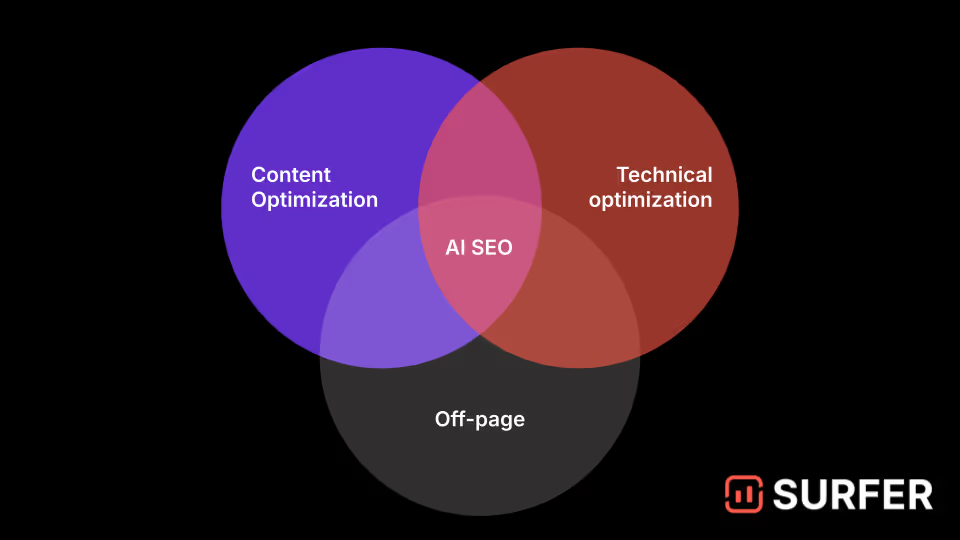
Three goals define it:
- Prompt Coverage: Are you present in the answers buyers actually ask?
- Citation Share: How often are you the source assistants cite?
- Assistant Recall: Do assistants repeat your facts correctly?
Four metrics track it:
- LLM Share of Voice: % of prompts where your brand appears.
- Citation Share: % of citations pointing to you.
- Accuracy Score: % of answers that get your facts right.
- Platform Coverage: Presence across YouTube, Reddit, LinkedIn, and high-authority lists–the sources assistants lean on.
The AI SEO Playbook (Mini Guide for CMOs)
Here’s the exact system we run at Surfer to win visibility inside AI answers. Think of this as a practical chapter you can follow step-by-step.
Step 1. Track What Matters (Baseline Visibility)
The first move is visibility tracking. You can’t manage what you don’t measure.
We started by adding ~100 prompts into Surfer’s AI Tracker, covering the entire buyer journey:
- Problem queries (“how to improve SEO rankings”)
- Category queries (“best AI SEO tools”)
- Comparison queries (“Surfer vs Semrush”)
- Alternatives queries (“best alternatives to Ahrefs”)
- Integration queries (“SEO tools for content teams”)
The sooner you start tracking key prompts, the faster you’ll build insights and action items you can use later. Even if you’re not ready to act right now, set up an AI Tracker so your team has a head start in a few months.
I’m not saying Surfer is the only AI tracker out there.
But when you choose one, keep this in mind:
Good trackers: run prompts multiple times, test across different models, expose the actual sources assistants cite, and recommend concrete actions.
Bad trackers: scrape a single answer once a day and call it “data.”
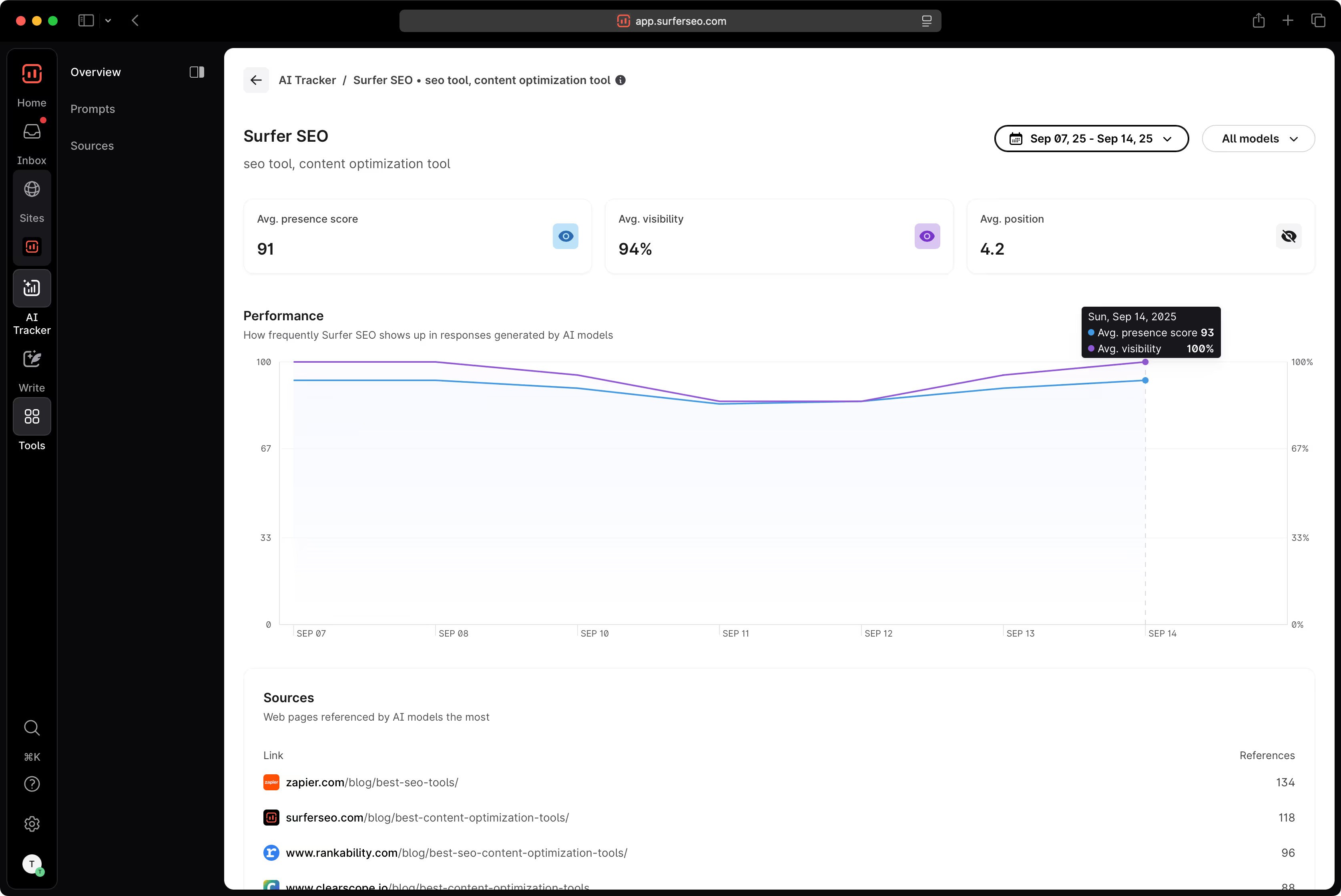
Step 2. Earn the Missing Mentions
Once you see where you’re absent, it’s time to get listed.
- If you’re missing from a “Best X” roundup, reach out. Sometimes one email is enough.
- Other times, it’s an affiliate arrangement or a small sponsorship.
Example: Sometimes we have to pay to secure a spot but the return will compound for years.
Step 3. Replace Competitor Citations
If assistants keep citing your competitors, the fix is straightforward: write the better page.
We did this for a “vs” article. Using Surfer’s Content Editor, we optimized for entity coverage, added counter-arguments, and pushed the page to #1. Within weeks, assistants switched citations from our competitor to us.
Not every brand can win top-3 rankings alone. In those cases, consider publishing your article on a larger, high-authority site.
The key is factual clarity and entity coverage–the exact ingredients assistants rely on.
When we pubish on other sites, we also optimize those articles with Surfer.
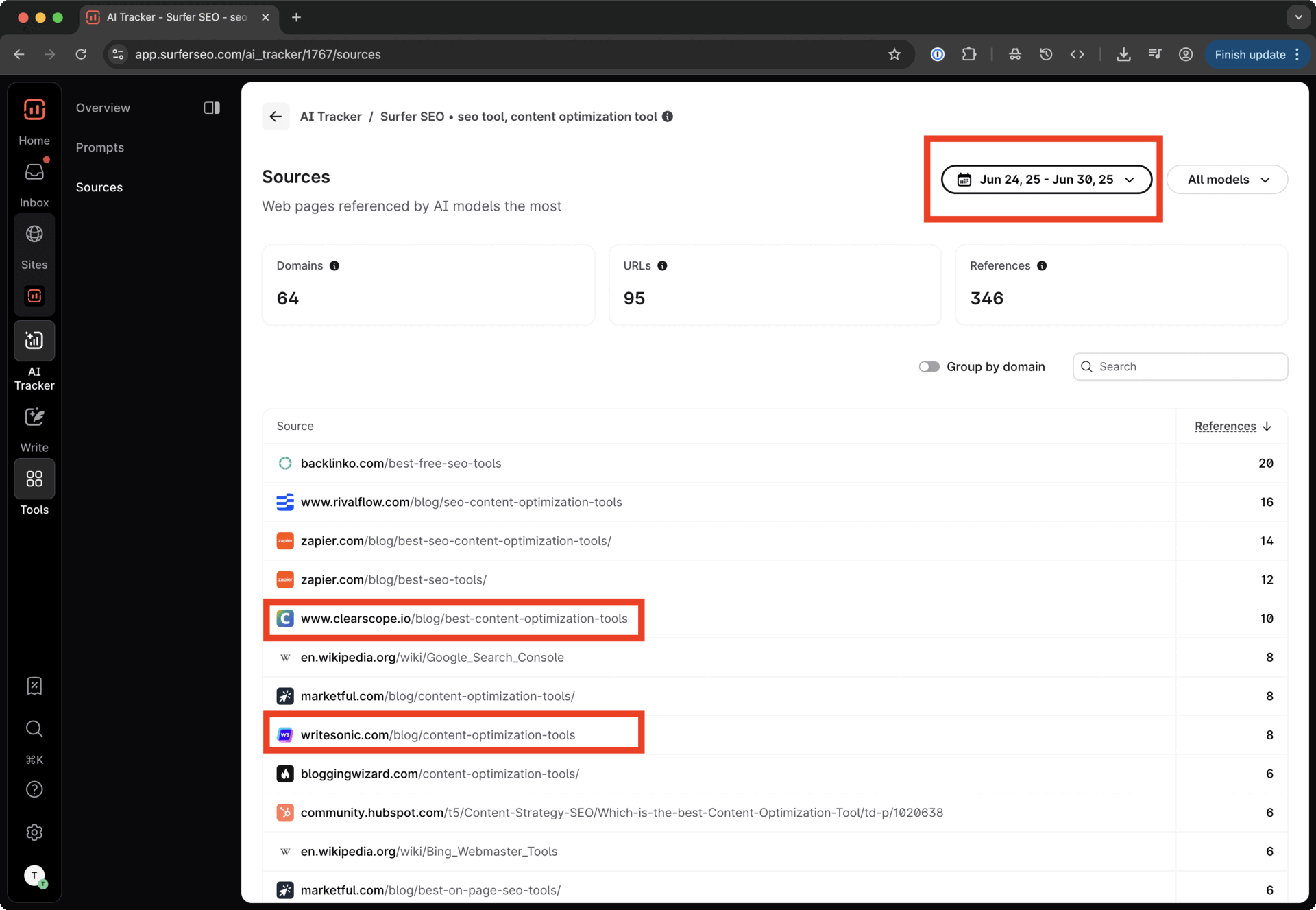
Step 4. Publish BOFU Content First
Assistants lean heavily on bottom-of-funnel (BOFU) content:
- “Best X” lists
- “X vs Y” comparisons
- “X alternatives” roundups
These are the exact pages buyers (and assistants) use to form shortlists.
For example, when someone asks ChatGPT “best email software,” the follow-up is often “X vs Y.” The assistant then runs those searches.
If you don’t have comparison, review, or roundup pages in place, your competitors end up shaping the story instead of you.
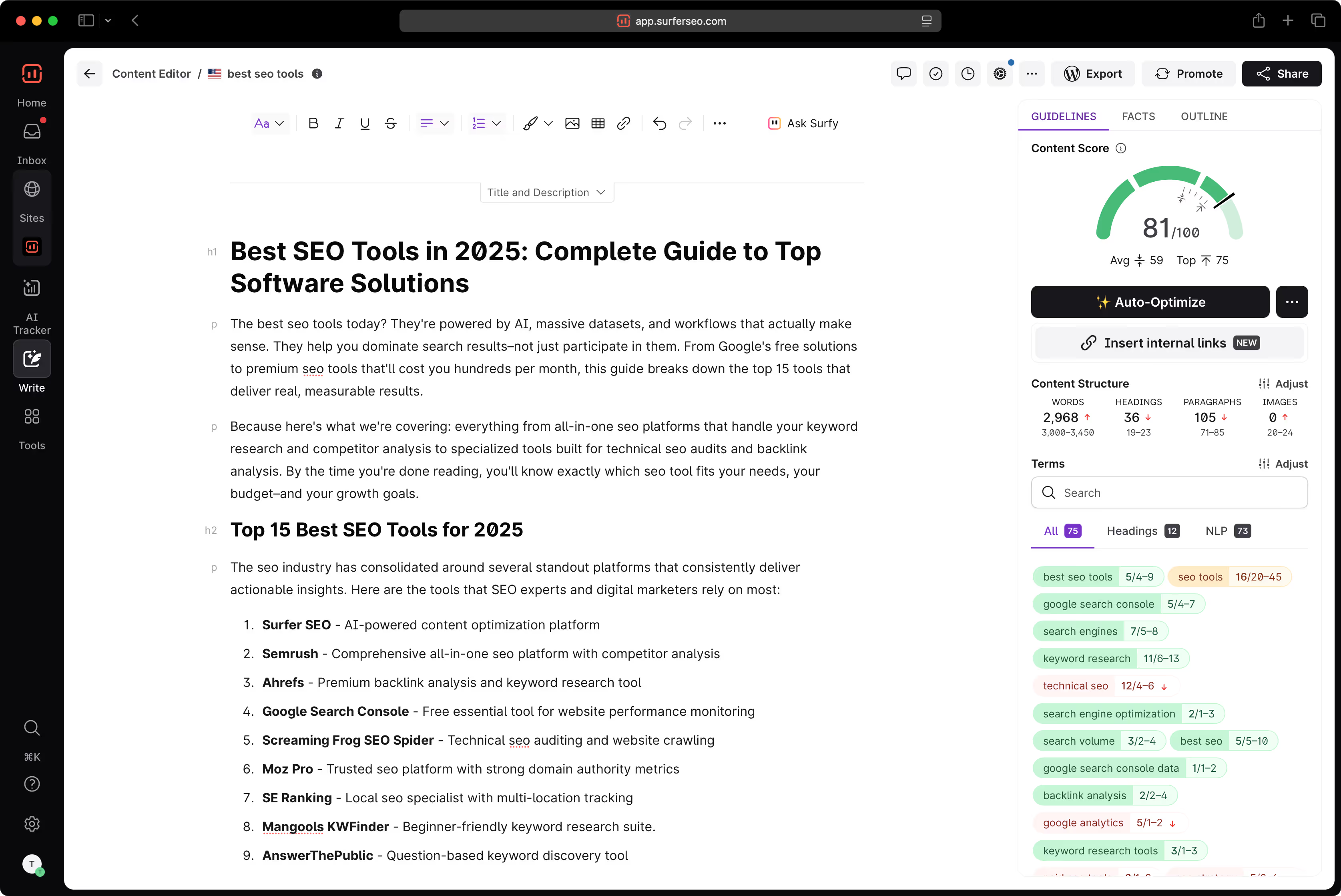
Step 5. Show Up Where Assistants Look
Our analysis of 36M AI Overviews showed assistants pull repeatedly from:
- YouTube videos
- Reddit threads
- LinkedIn articles
These aren’t side channels anymore, they directly shape AI answers. Publish videos, join discussions, and seed LinkedIn posts that restate your point of view.
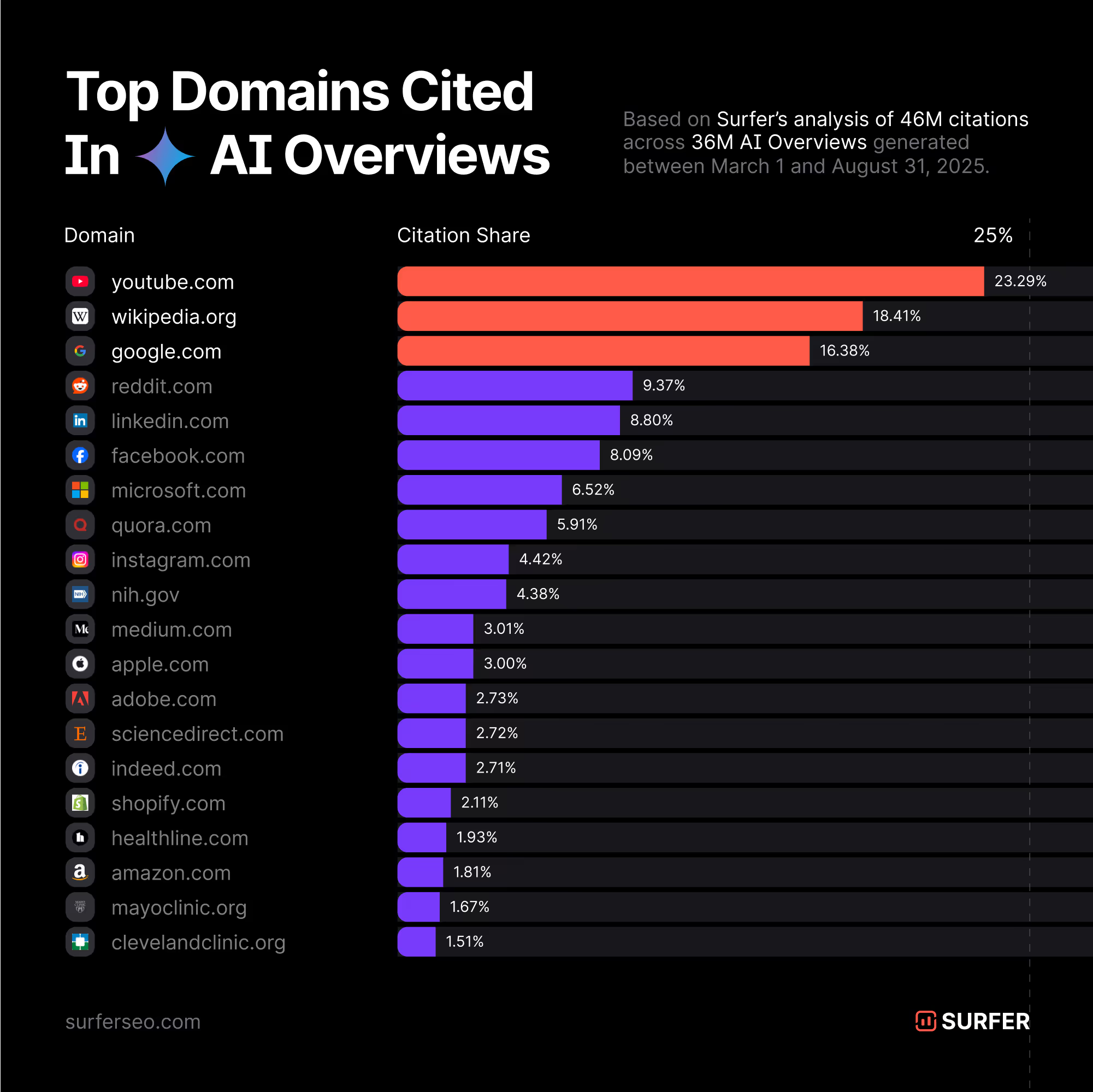
Step 6. Optimize for Extraction, Not Just Ranking
Ranking alone isn’t enough. Your content needs to be easy to lift.
- Clean HTML
- Clear headings
- Lists and tables
- Short Q&A blocks
With Auto Optimize, Coverage Booster and Surfy, we made pages “citability-ready.”
The result: visibility even when a page ranks top 20, not just top 10.

Step 7. Measure, Learn, Repeat
Every week, we:
- Check AI Tracker.
- Ship 2–3 fixes (a new “vs” page, an outreach win, a YouTube video).
- Track changes in Prompt Coverage, Citation Share, and Accuracy.
This isn’t a one-off campaign. It’s a discipline. We know competitors are running the same playbook. That’s why we never skip a week. Consistency is what compounds into a moat.
A 30-day sprint you can run
Week 1: Baseline
- Add 50–100 prompts to Surfer’s AI Tracker across problem, category, and BOFU stages.
- Export the top cited sources. Expect a heavy dose of Wikipedia/YouTube/Reddit, plus high-authority lists.
Week 2: Close obvious gaps
- Outreach to 10 roundup owners for inclusion (offer product access, affiliate terms, or a sponsorship).
- Draft two BOFU pages (“Best X for [ICP]” and “[You] vs [Competitor]”) and script a 3–5 minute YouTube explainer.
Week 3: Publish and optimize
- Publish with Auto Optimize, layer internal links, and ship the video.
- Seed LinkedIn posts that echo your narrative and link your new assets.
Week 4: Measure and repeat
- Re-run the tracker. Document your deltas in Prompt Coverage, Citation Share, and Accuracy.
- Double down on the moves that shifted visibility.
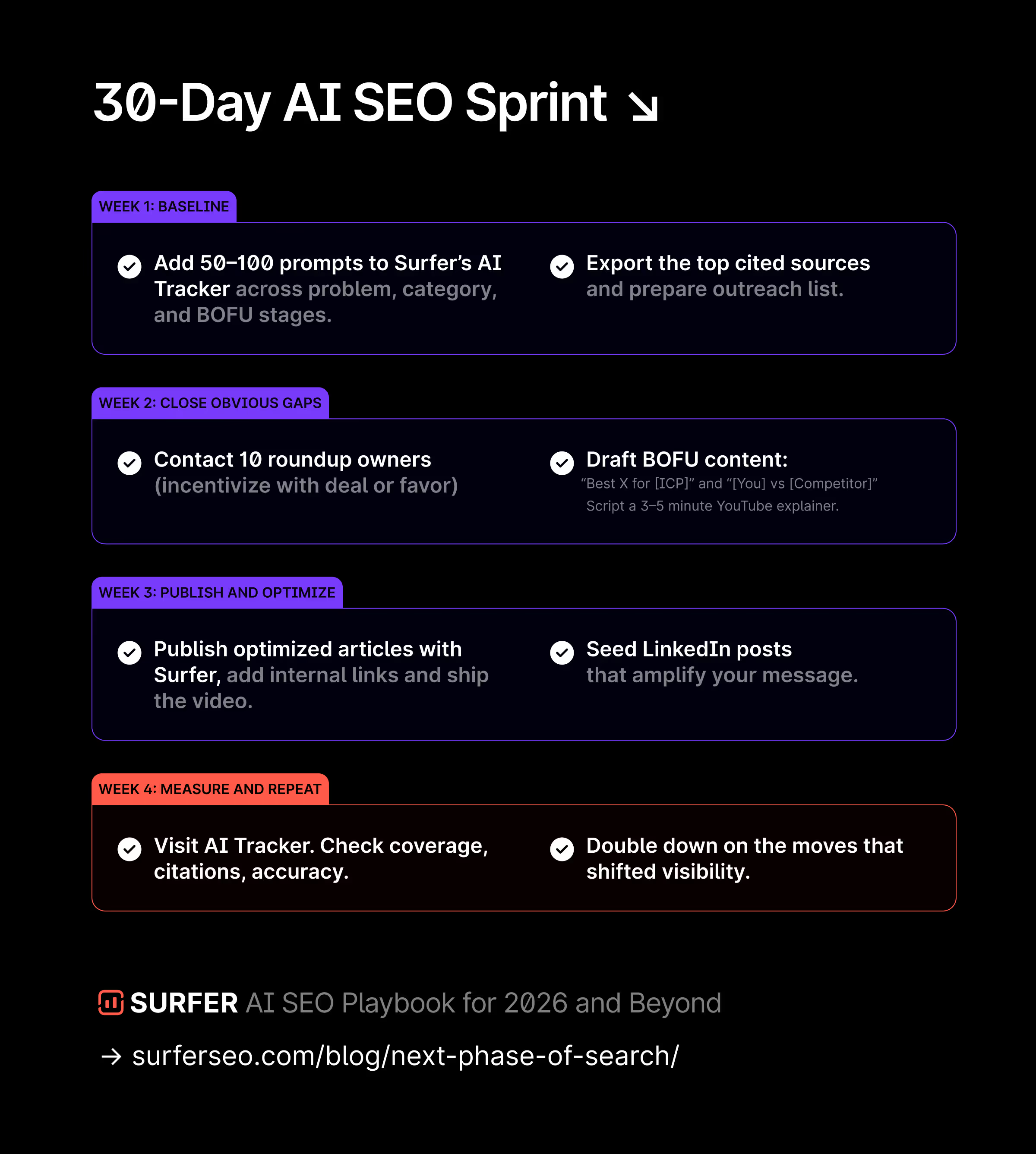
Why act now (not next quarter)
It’s never been easier to win–if you ignore the “SEO is dead” noise and double down on proven fundamentals.
- Small players can still beat giants without massive budgets.
- Your playbook needs polishing, not reinvention.
- Platform content is now core. YouTube, Reddit, and LinkedIn drive citations assistants rely on.
- The rules aren’t set. AIO shows up in only ~13% of queries today. Early movers shape the narrative and gain the most leverage.
- Assistants are exploding. ChatGPT Search already serves billions of queries—and it always shows sources. If you’re not there, you’re invisible.
.avif)
Surfer’s stance: lead the category
Our mission hasn’t changed, but the battleground has.
We make sure your brand shows up with the right message in the answers buyers trust—on Google, ChatGPT, Perplexity, and whatever comes next.
And here’s the Surfer's workflow that makes it happen:
- Track visibility with AI Tracker across ChatGPT, AI Overviews, Gemini, and Perplexity.
- Optimize pages with Content Editor to make them assistant-ready, citable-friendly and high-ranking on regular search.
- Map topics with Topical Maps to run keyword research, cluster relevant ideas, and spot missing articles.
- Scale content with Surfer AI to produce BOFU and cluster content, infused with your brand voice and knowledge.
We’re not just reacting to AI search. We’re building the playbook, and the tools, to lead it.
This isn’t the end of search. It’s a rebirth. The brands that show up in AI answers will set the terms of the next decade.
Move now. Track your prompts. Earn your mentions. Structure for extraction.
And if you want the fastest path, start in Surfer.
We’re ready to help you win the AI discovery layer!

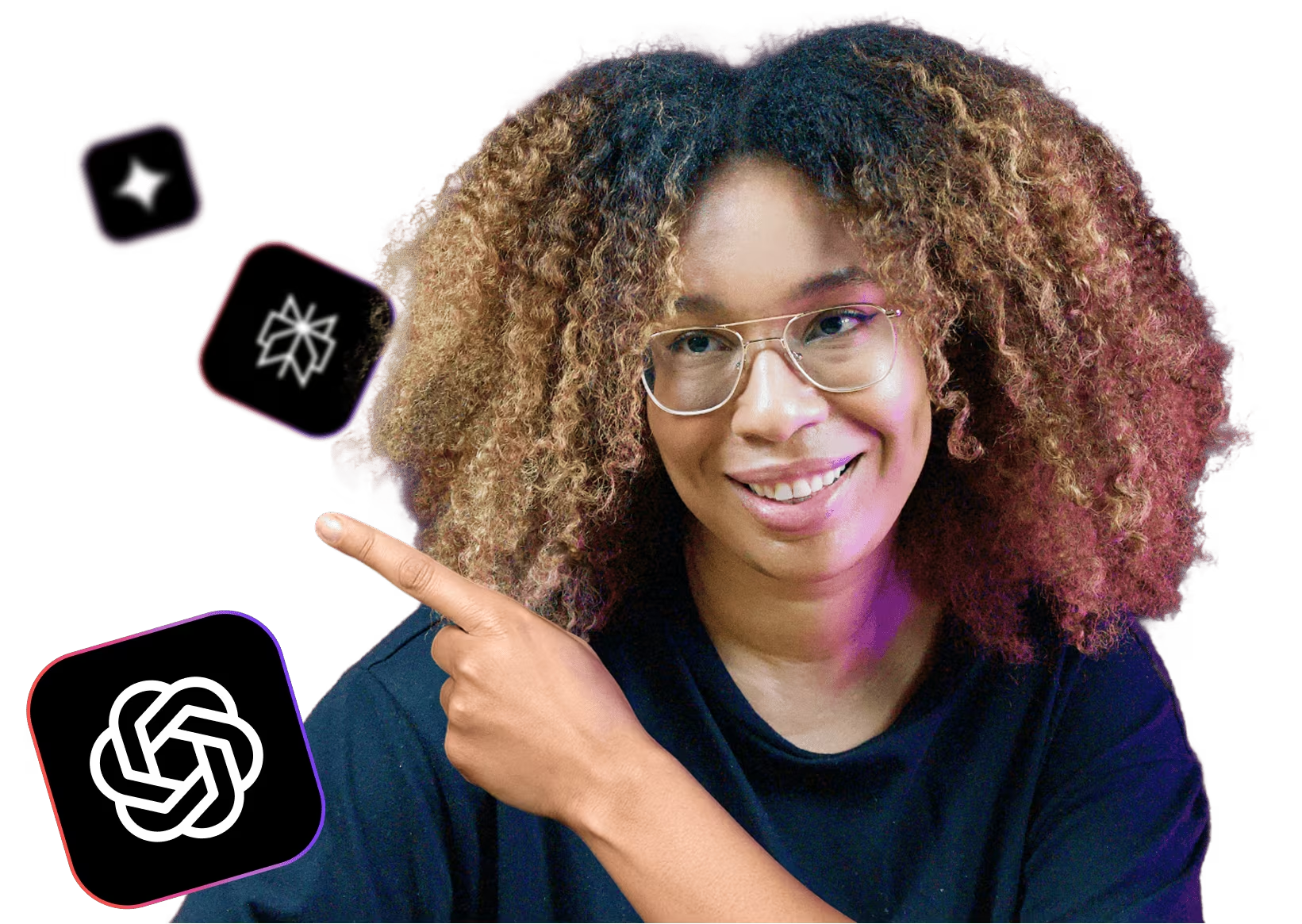


.avif)
